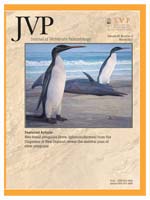Asymmetry of the knee (distal femur), where the medial trochlear ridge is larger than the lateral one, has been observed in certain ungulates, but until now there has not been a comprehensive study of this anatomy across a range of extant and extinct mammals. A degree of knee asymmetry is present in most ungulates: this asymmetry increases in extent with increasing body size, and is also more prominent in taxa with a preference for open habitats, independent of body size. However, camelids and proboscideans have symmetrical knees, regardless of size. We propose that the correlation of degree asymmetry with habitat type, as can be observed in extant ruminants, is related to the preferred type of locomotion, with the gallop gait being preferred in open habitats. Neither camelids nor proboscideans employ the gallop as a habitual gait. The allometric increase observed in knee asymmetry, in combination with the correlation with locomotor preference, likely reflects anatomy that resists muscular forces pulling the patella medially when the animal is supporting its weight on a single hind leg during fast locomotion. Inclusion of fossil taxa leads to interesting interpretations about the behavior of extinct ungulates: extinct brachydont equids of presumed closed habitat preference have less asymmetric knees than extant equids, or extinct hypsdont equids of presumed open habitat preference; the knee anatomy of giant deer, Megaloceros, indicates a preference for open habitats, whereas the knee anatomy of the brontothere Megacerops indicates a proboscidean (versus rhino-like) type of fast locomotion.
How to translate text using browser tools
1 March 2012
On Their Knees: Distal Femur Asymmetry in Ungulates and Its Relationship to Body Size and Locomotion
Christine M. Janis,
Boris Shoshitaishvili,
Robert Kambic,
Borja Figueirido
ACCESS THE FULL ARTICLE





